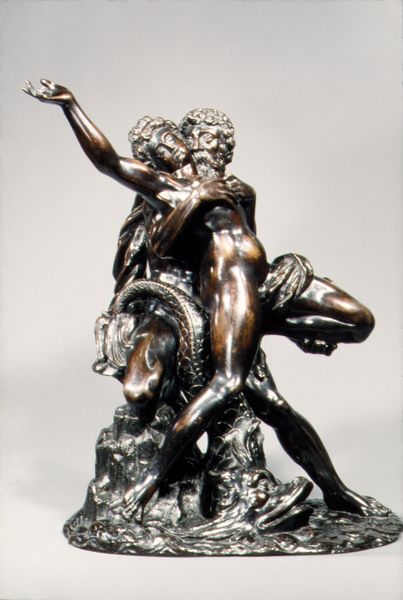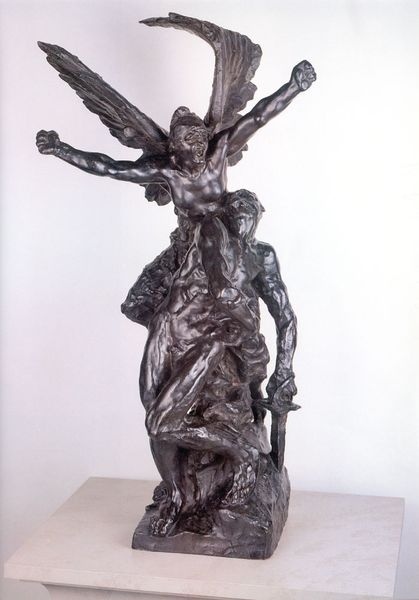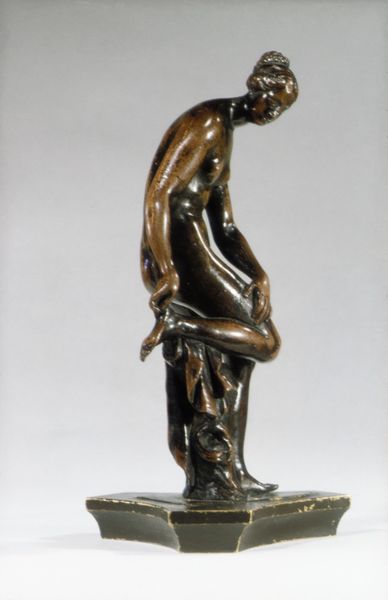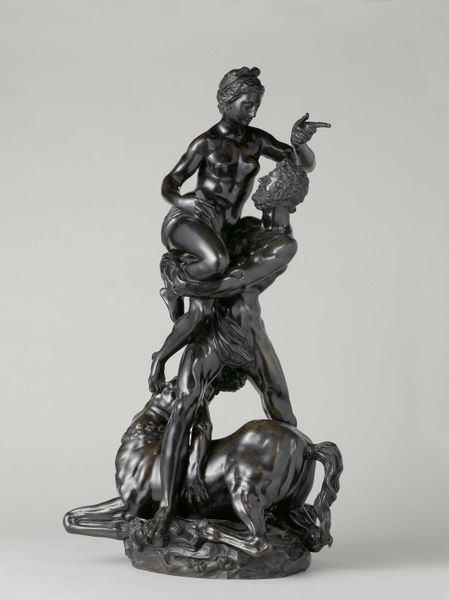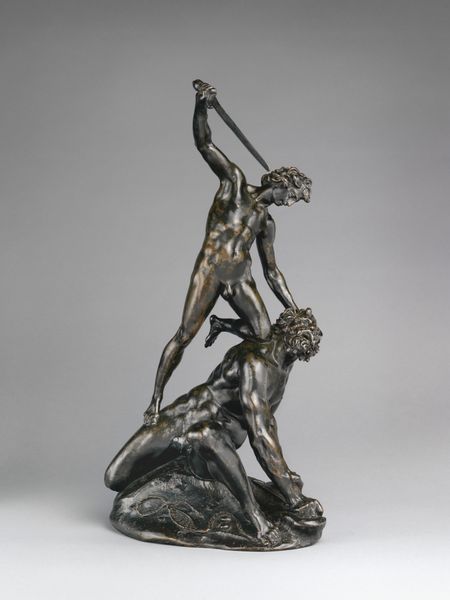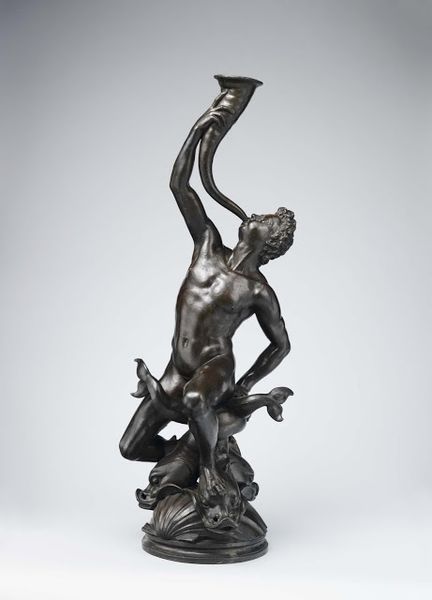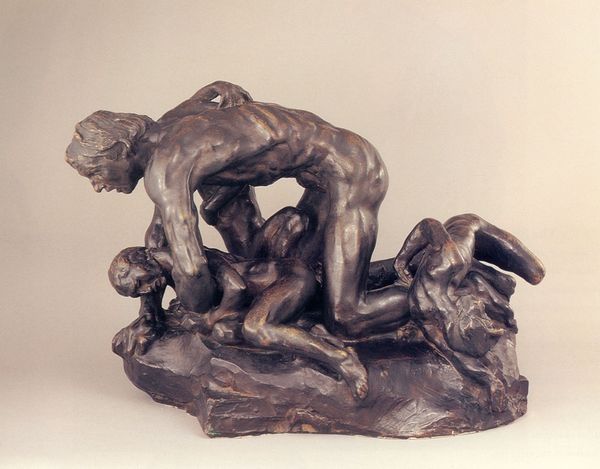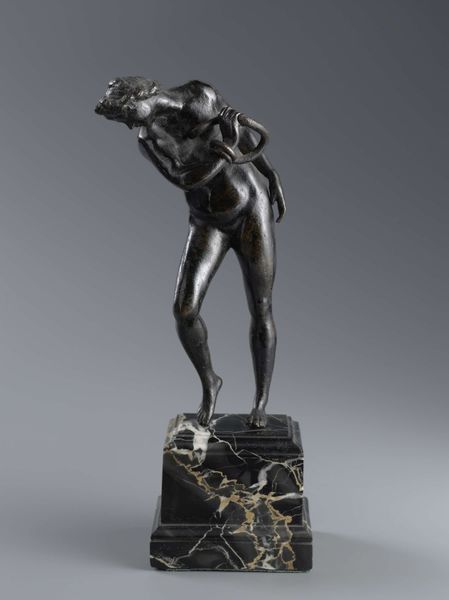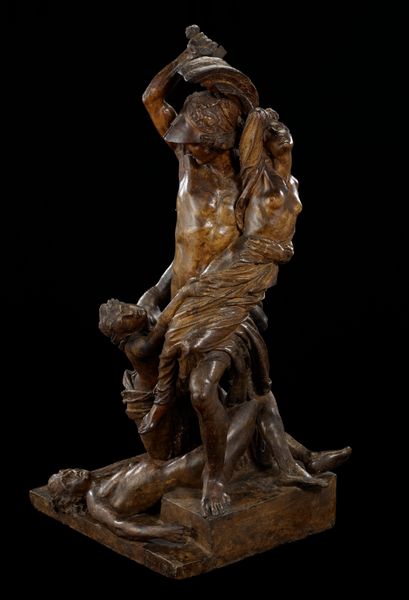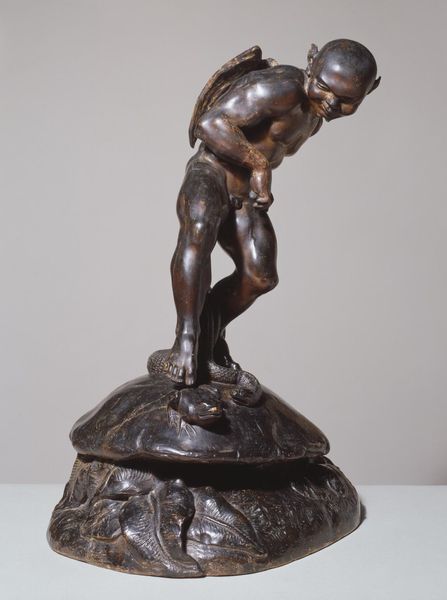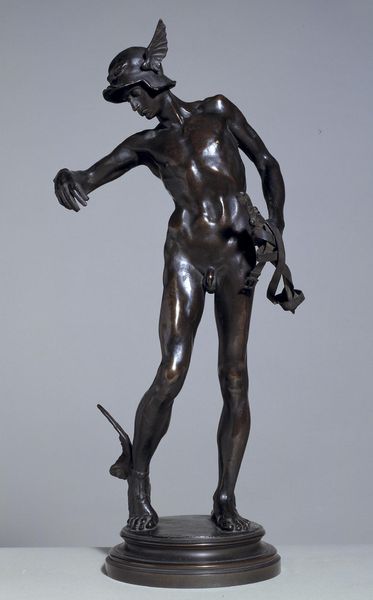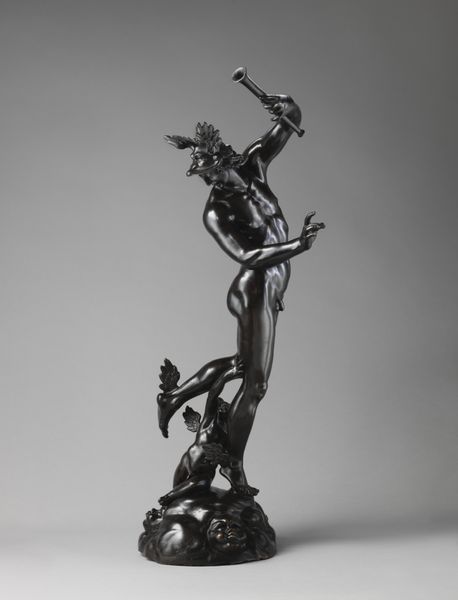
Copyright: Public domain
Editor: Standing before us is Auguste Rodin's "I Am Beautiful" from 1882, rendered in bronze. It's quite striking – the raw musculature, the weight of the figure… there’s a certain tension. What strikes you when you look at this sculpture? Curator: Immediately, I'm drawn to the bronze itself. Consider the foundry where this was cast, the laborers who poured the molten metal, the long, hot hours of chasing and finishing. Bronze casting wasn’t just art; it was industry. And that final patina, that darkened surface – it's not just aesthetic; it's the culmination of industrial processes. Doesn’t it seem to you a world away from a painter’s studio? Editor: Absolutely. It really makes you consider the labor behind the piece, rather than just Rodin's singular genius. Curator: Exactly! And think about the social implications of the nude figure. It's titled, "I Am Beautiful" – but who is saying this, and for whom? Was Rodin challenging bourgeois norms by representing sensuality directly, or was he reinforcing existing power dynamics through the male gaze? Editor: I hadn't considered that. I just thought of it as this celebration of the human form. Curator: Romanticism often obscures that. By foregrounding the production of the artwork and the social context of its creation and reception, we can unpack so many hidden layers that tell more than just the artwork's story, but of that whole segment of history, that period. Editor: I see what you mean. It makes you realize there's more to beauty than just the finished product; there's a whole world embedded within it. Curator: Indeed, even the title starts sounding a little sarcastic, almost performative. A great demonstration on how the artistic means often determines an artworks context.
Comments
No comments
Be the first to comment and join the conversation on the ultimate creative platform.
